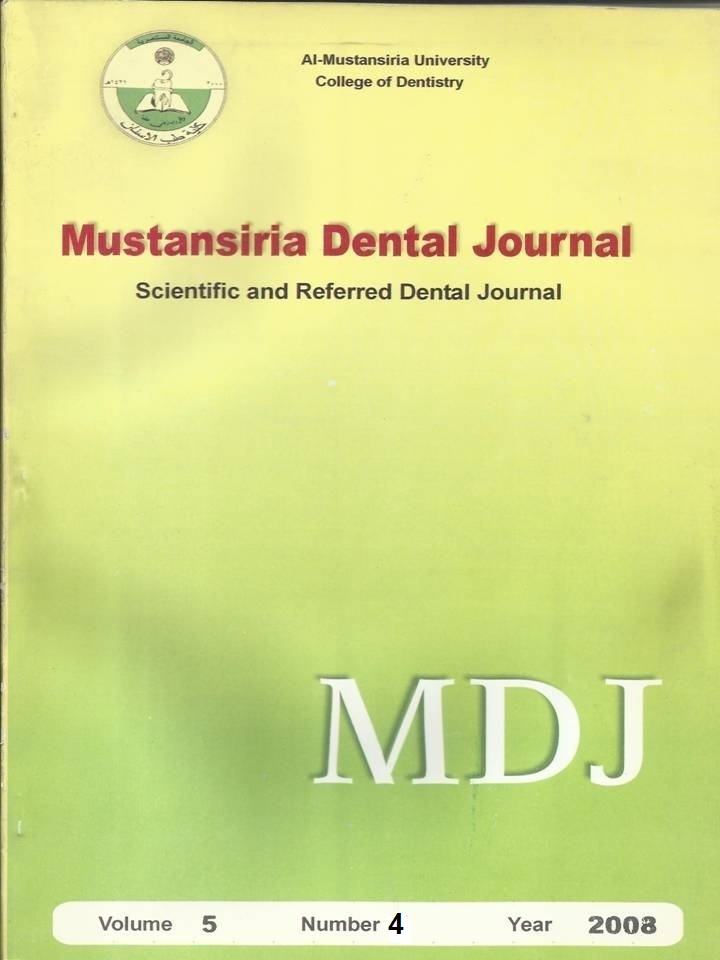dentification and Antimicrobial Susceptibility of Bacterial Isolates from Odontogenic Abscesses
DOI:
https://doi.org/10.32828/mdj.v5i4.570Keywords:
Key words: Odontogenic infections, dental abscess, microbiological diagnosis, antibiotic susceptibilityAbstract
Objective: The purpose of the study was to identify the bacterial composition of the microbiota from odontogenic abscesses and their antimicrobial susceptibilities.
Study Design: An aspirate of pus from 37 patients with odontogenic abscesses was obtained by needle aspiration and processed aerobically and under anaerobic conditions. Bacteria were isolated and identified by standard Laboratory methods. Then antimicrobial susceptibility of isolated bacteria was determined by using disc diffusion method.
Results: Out of 37 aspirates, 100% yielded positive culture, 34 aspirates contained a mix of microorganisms. A total of 90 strains of bacteria were isolated.Out of 90 strains, 63 strains were anaerobes and 27 strains were aerobes and facultative anaerobes. The mean number of strains per sample was 2.4, two samples were purely anaerobes, 9 samples were mixed anaerobes, 2 samples were purely facultative anaerobes, no purely aerobic, 17 had mixed growth of anaerobes and facultative anaerobes, and 7 samples had mixed growth of aerobes and facultative anaerobic bacteria. Out of 90 isolates, 42 (46.67%) were Gram-positive cocci, 25 (27.78%) were Gram-positive bacilli, 21 (23.33%) were Gram-negative bacilli, and 2 (2.22%) were Candida albicans. The genera of bacteria most frequently isolated were viridans group streptococci, Peptostreptococcus spp., Eubacterium spp., and Prevotella spp. Invitro antibiotic sensitivity of isolated microorganisms were tested for Penicillin, Amoxillin, Ampicillin, Amoxicillin/Clavulanic acid, Erythromycin, and Metronidazole by disc diffusion method. All isolates were sensitive to Amoxillin+ clavulanic acid: 27/27(100%), followed by Ampicillin: 24/27(88.89%), Amoxillin: 23/27(85.19%), Penicillin: 22/27(81.48%), Erythromycin: 12/27(44.44%), and metronidazole: 10/27(37.04%).
Conclusions: The present results confirm the existence of mixed infection with predominance of anaerobic and facultative anaerobic bacteria in odontogenic abscesses. Penicillin still possesses antimicrobial activity against the majority of bacteria isolated from odontogenic infections. However, if penicillin therapy has failed to be effective, the combination of penicillin with ampicillin or amoxillin with clavulanic acid is recommended.
Downloads
Published
Issue
Section
License
The Journal of Mustansiria Dental Journal is an open-access journal that all contents are free of charge. Articles of this journal are licensed under the terms of the Creative Commons Attribution International Public License CC-BY 4.0 (https://creativecommons.org/licenses/by/4.0/legalcode) that licensees are unrestrictly allowed to search, download, share, distribute, print, or link to the full texts of the articles, crawl them for indexing and reproduce any medium of the articles provided that they give the author(s) proper credits (citation). The journal allows the author(s) to retain the copyright of their published article.
Creative Commons-Attribution (BY)









